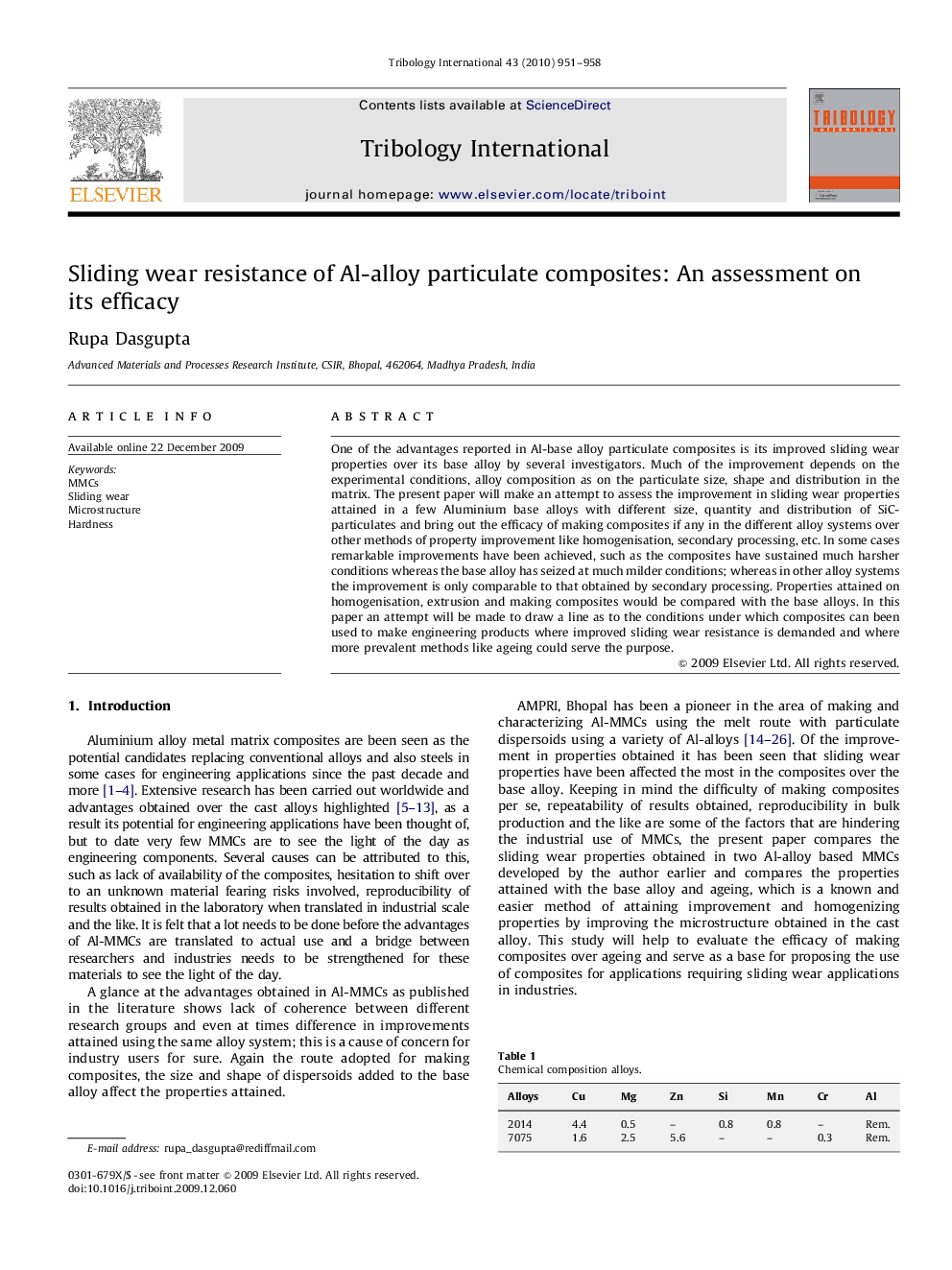| Article ID | Journal | Published Year | Pages | File Type |
|---|---|---|---|---|
| 615678 | Tribology International | 2010 | 8 Pages |
Abstract
One of the advantages reported in Al-base alloy particulate composites is its improved sliding wear properties over its base alloy by several investigators. Much of the improvement depends on the experimental conditions, alloy composition as on the particulate size, shape and distribution in the matrix. The present paper will make an attempt to assess the improvement in sliding wear properties attained in a few Aluminium base alloys with different size, quantity and distribution of SiC-particulates and bring out the efficacy of making composites if any in the different alloy systems over other methods of property improvement like homogenisation, secondary processing, etc. In some cases remarkable improvements have been achieved, such as the composites have sustained much harsher conditions whereas the base alloy has seized at much milder conditions; whereas in other alloy systems the improvement is only comparable to that obtained by secondary processing. Properties attained on homogenisation, extrusion and making composites would be compared with the base alloys. In this paper an attempt will be made to draw a line as to the conditions under which composites can been used to make engineering products where improved sliding wear resistance is demanded and where more prevalent methods like ageing could serve the purpose.
Related Topics
Physical Sciences and Engineering
Chemical Engineering
Colloid and Surface Chemistry
Authors
Rupa Dasgupta,
